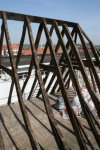Referring to the text and pictures above, I started a search for more info about rafter hewing and this is what I found in a book stored at the Finnish Parliament Library, of all places: Parrunveisto (Rafter hewing) by Työtehoseura (Work Efficiency Association), 1964, 24 pages with illustrations.One recent acquisition, a Billnäs 30/5 hewing axe head, "tervapiilu".
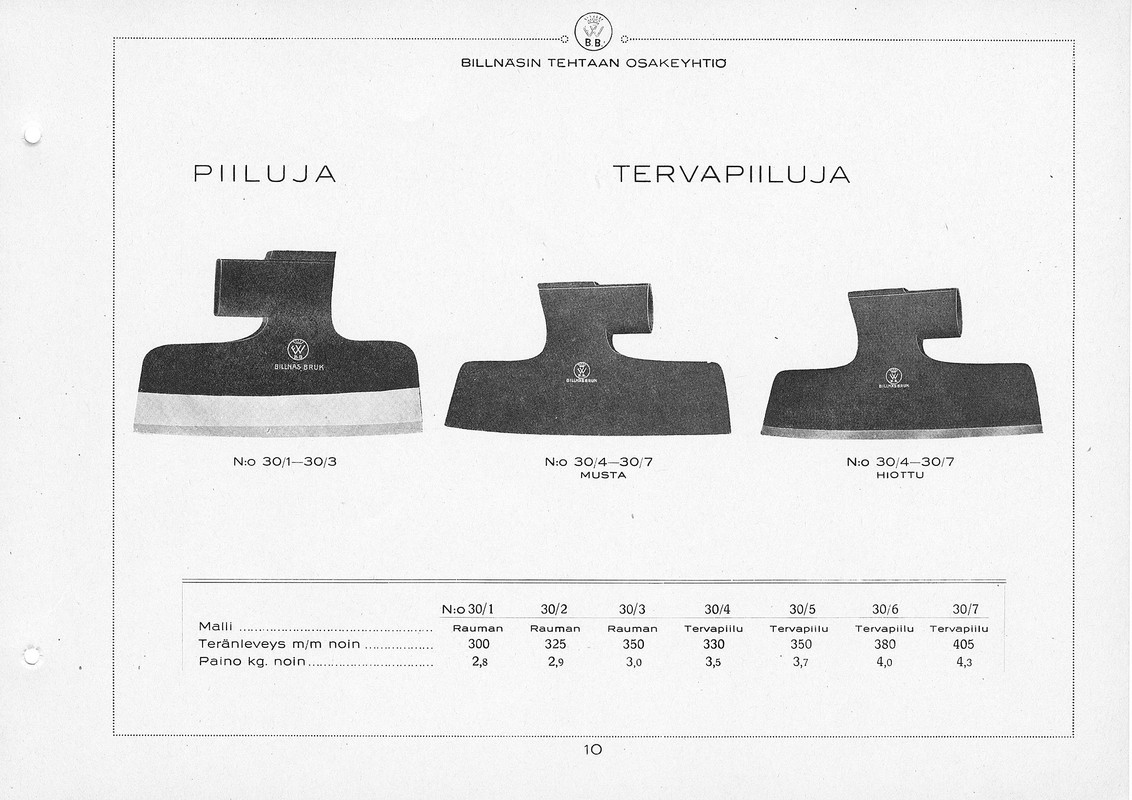
The head was covered in fine rust and underneath there was a beautiful patina.
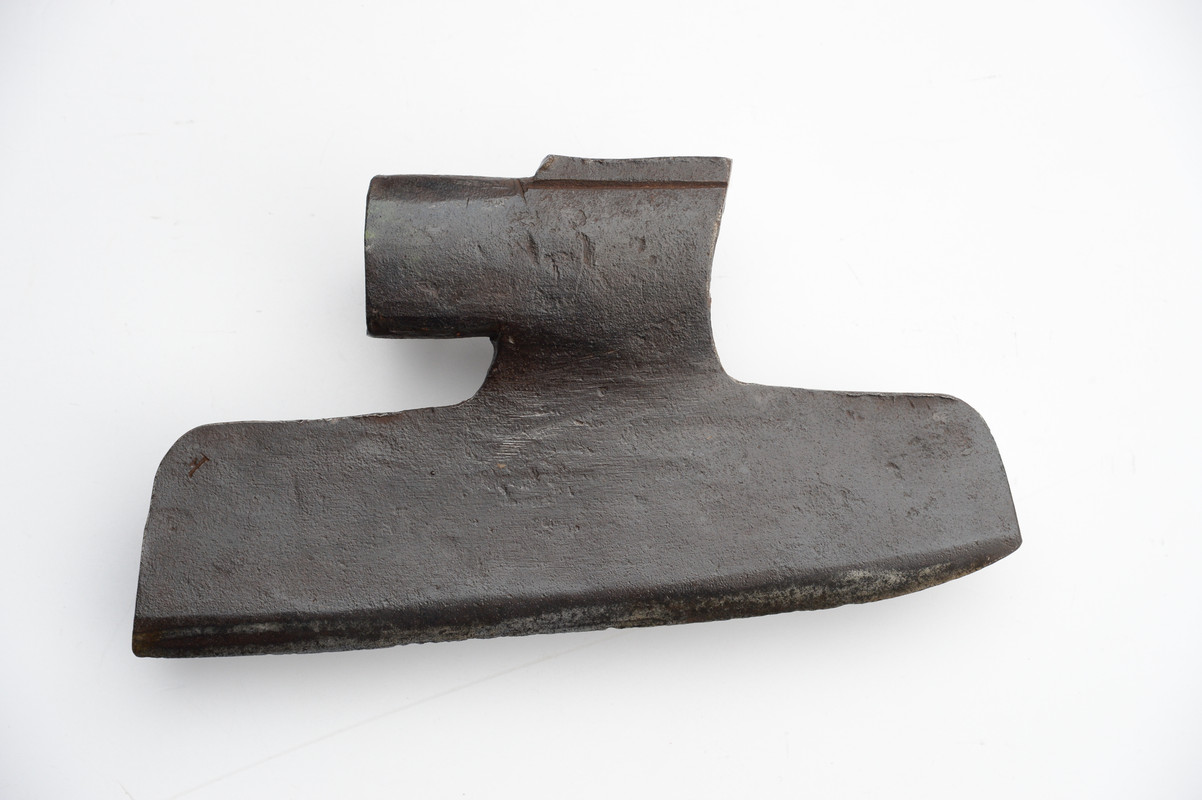
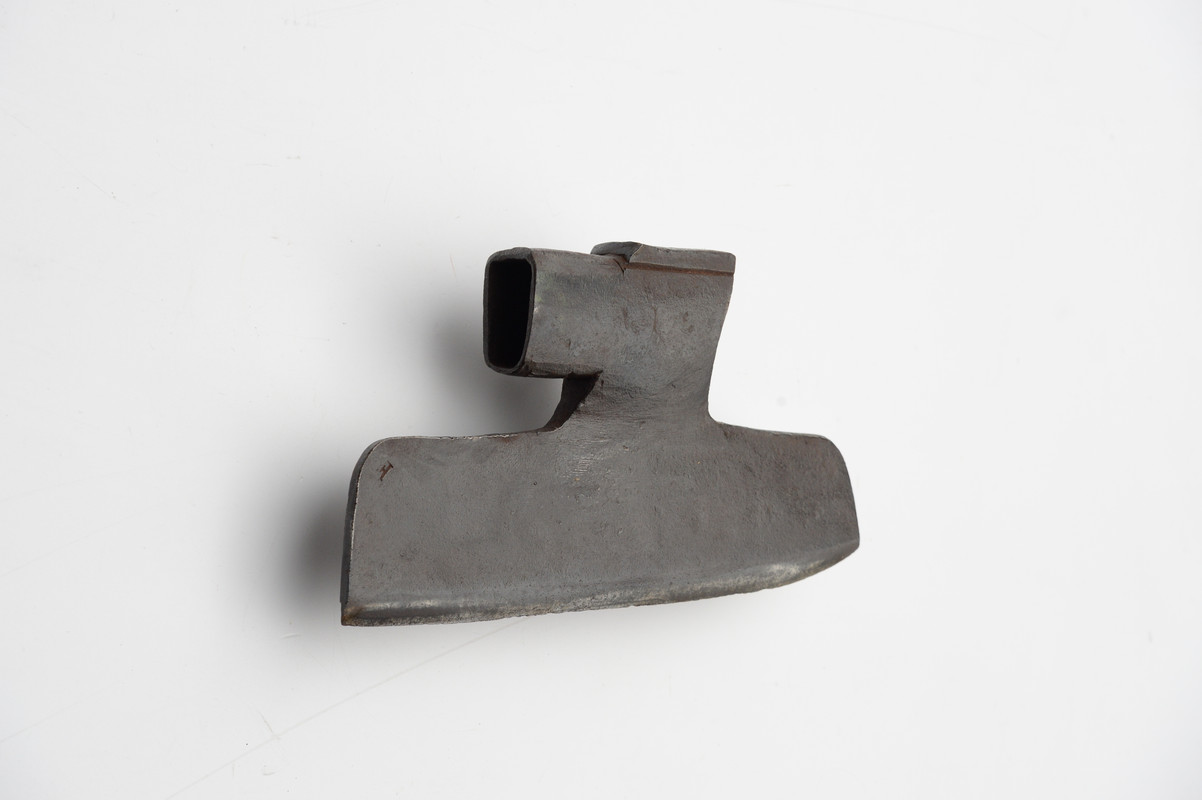
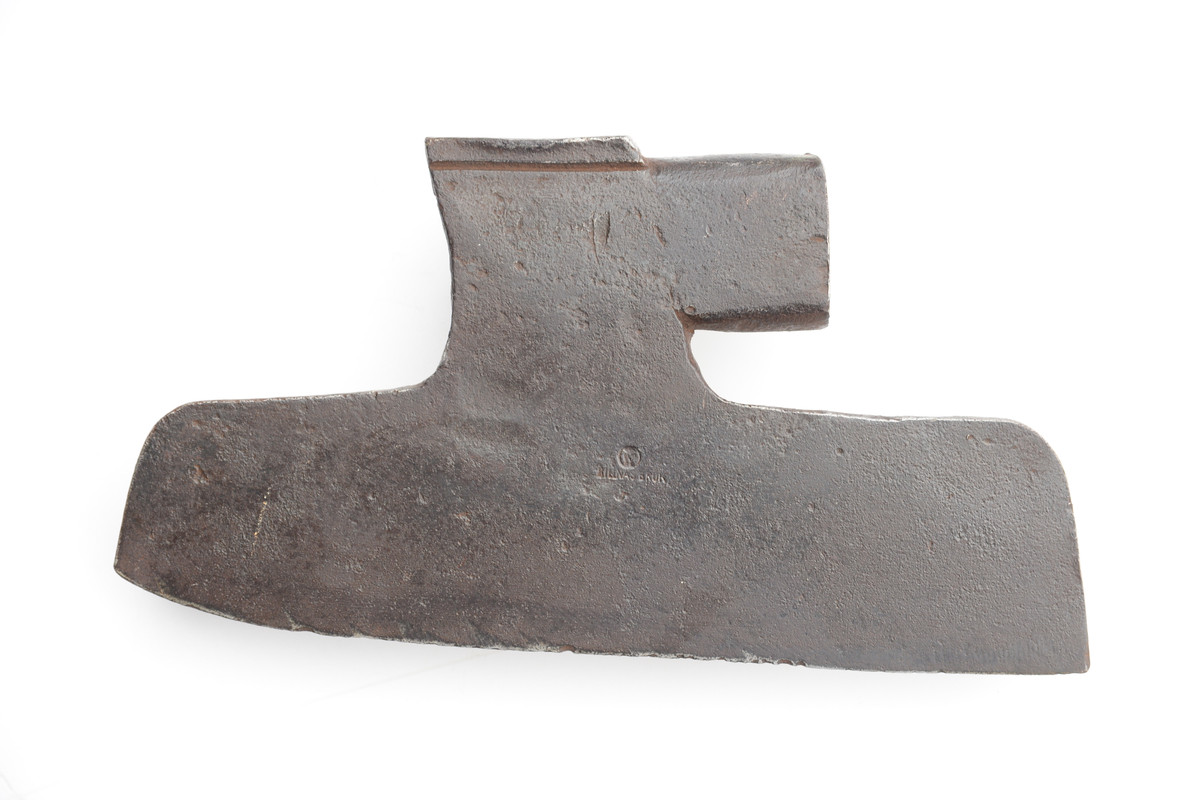
The head is sharpened for right-handed user i.e. the left side is straight:

Finna.fi public domain has several pictures of these axes in use. They were used to make so-called "egyptinparru" i.e. Egyptian rafter/beam, which were exported in millions to Middle East, right until 1960s.
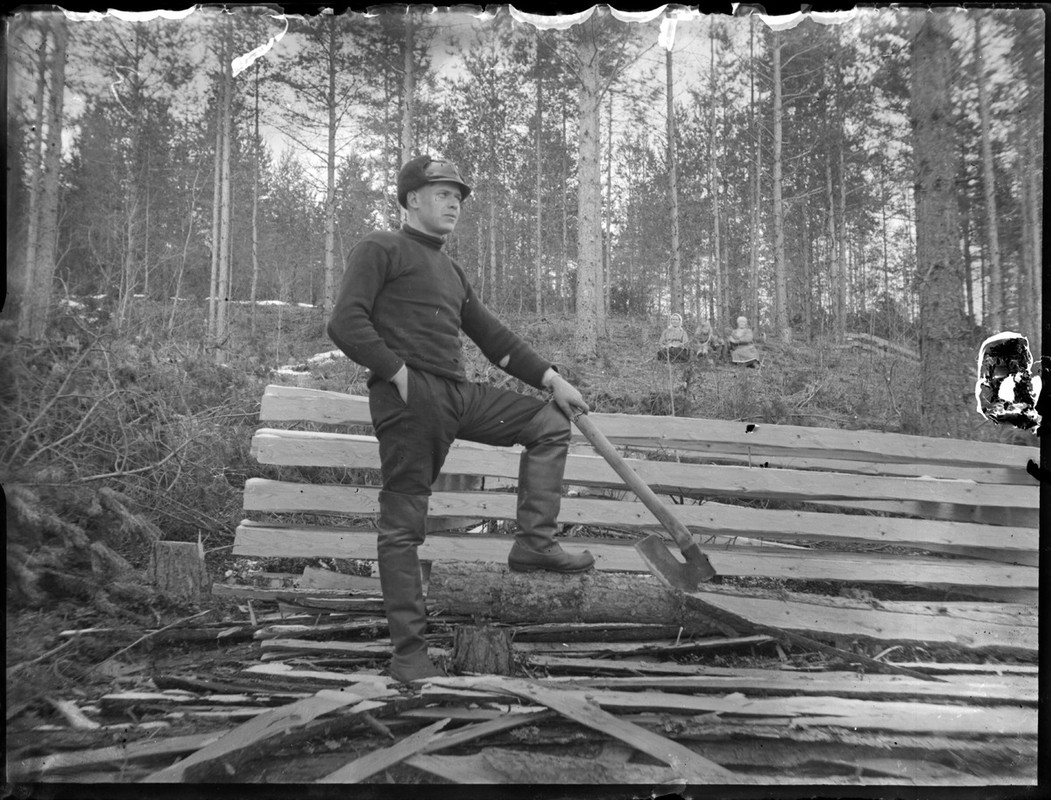
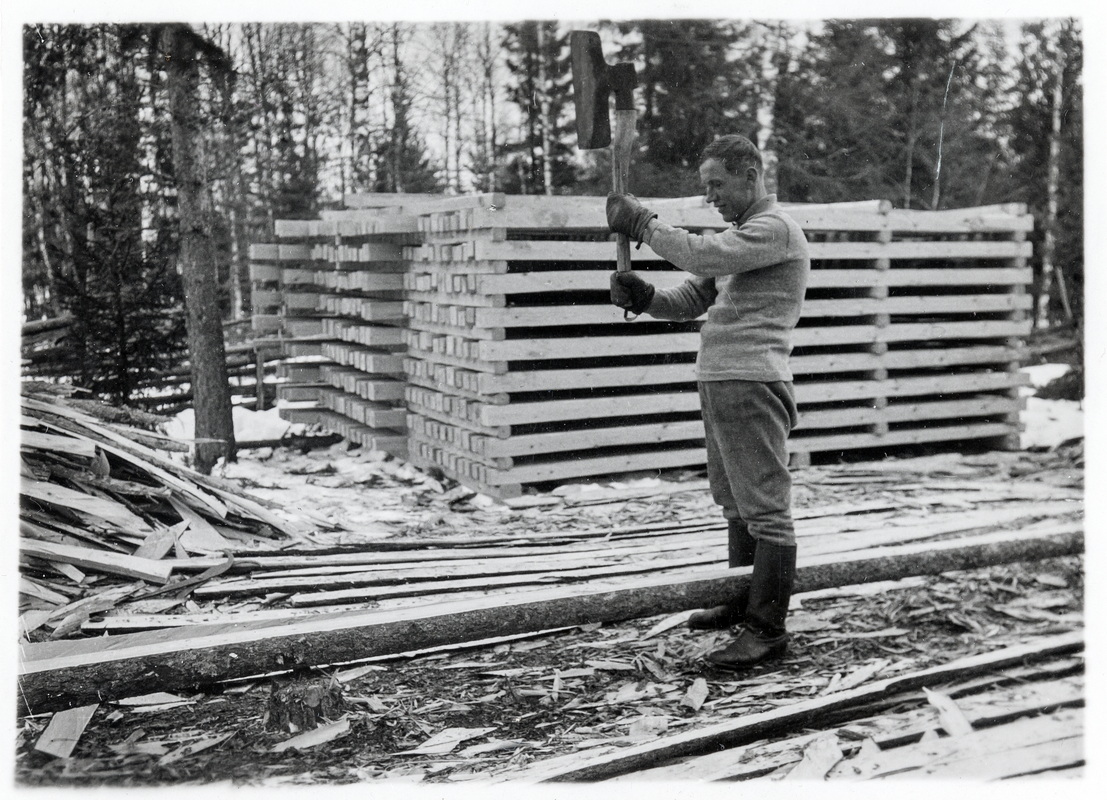
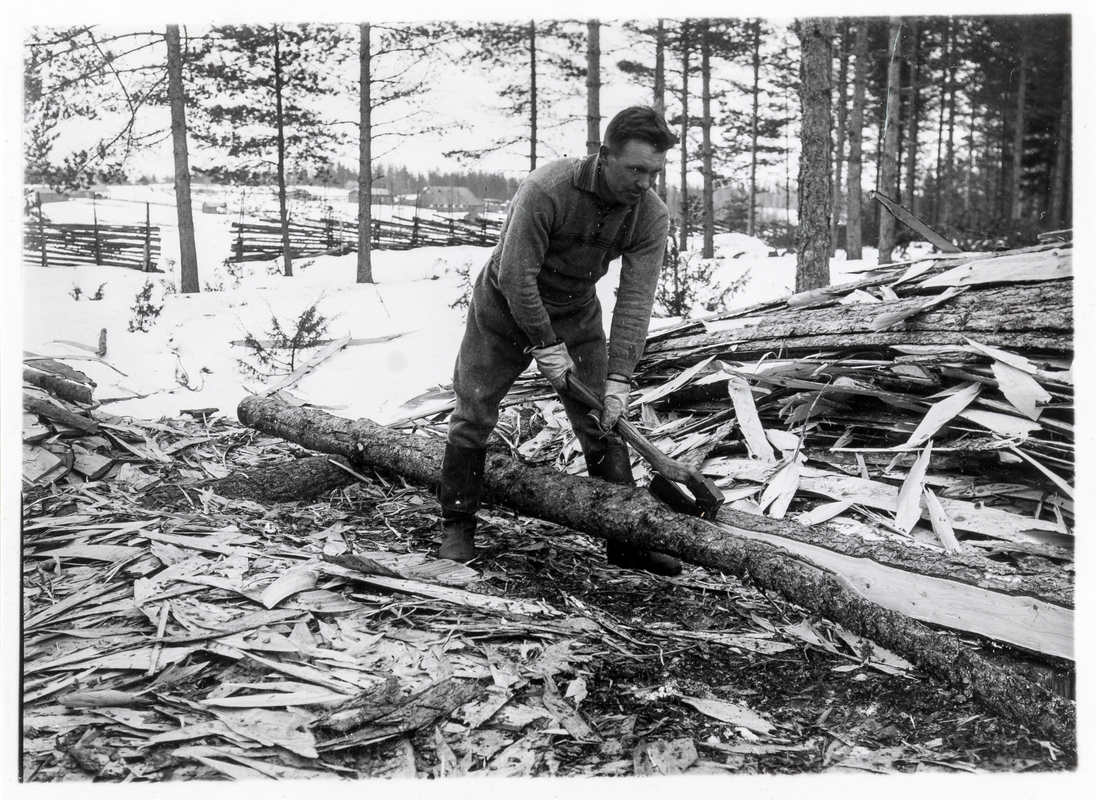
Those were real men
Some highlights:
*no written instructions existed prior to this book i.e. for 60 years!
*hewing of Egyptian rafters was started in (the winter of) 1902-03 in Finland
*originally they were used in Egypt to make roofs for clay brick houses, later they were used for scaffolding with rope ties
*hewed rafters last three times longer than sawn
*at first imported Swedish made Hults hewing axes were used, but in 1914 Billnäs began producing similar axes
*strict quality requirements for the end product are listed
*hewing in winter is preferred for better quality, in the summer the actual work is easier
*both pine (better) and spruce can be used
*detailed instructions about the actual work and its site lay-out are given
*two versions of the hewing are detailed: 3,5 kg with 35 cm blade and 4,0 kg with 40 cm blade, both in right and lefte handed versions
*haft is birch and straight, pointing about 4 cm downwards and attached using snake wedge; note that several specimens have curves hafts
*hewing sequence is given: 1st the curved side, 2nd the opposite side (light reemaineng curvature can be fixed in storage), then 3rd & 4th side, which have to be cut straight
*when cutting and using a right handed axe, the left hand is closer to blade
*the cut starts from the thicker end of the wood and the man goes backwards along the beam with his right foot first
*as the rafters are conical, special instructions are given how to stack them for drying
And yes, I scanned the whole booklet










